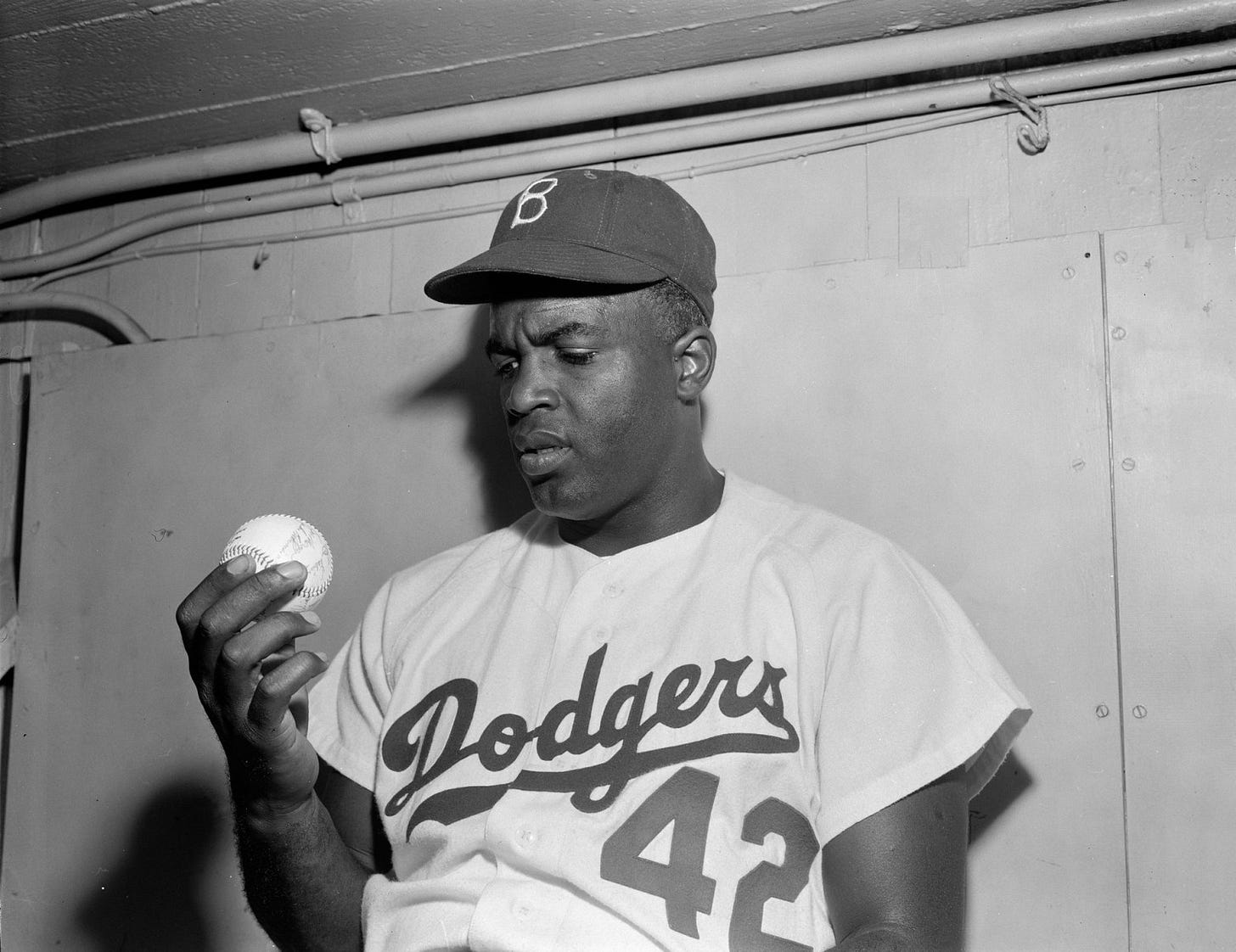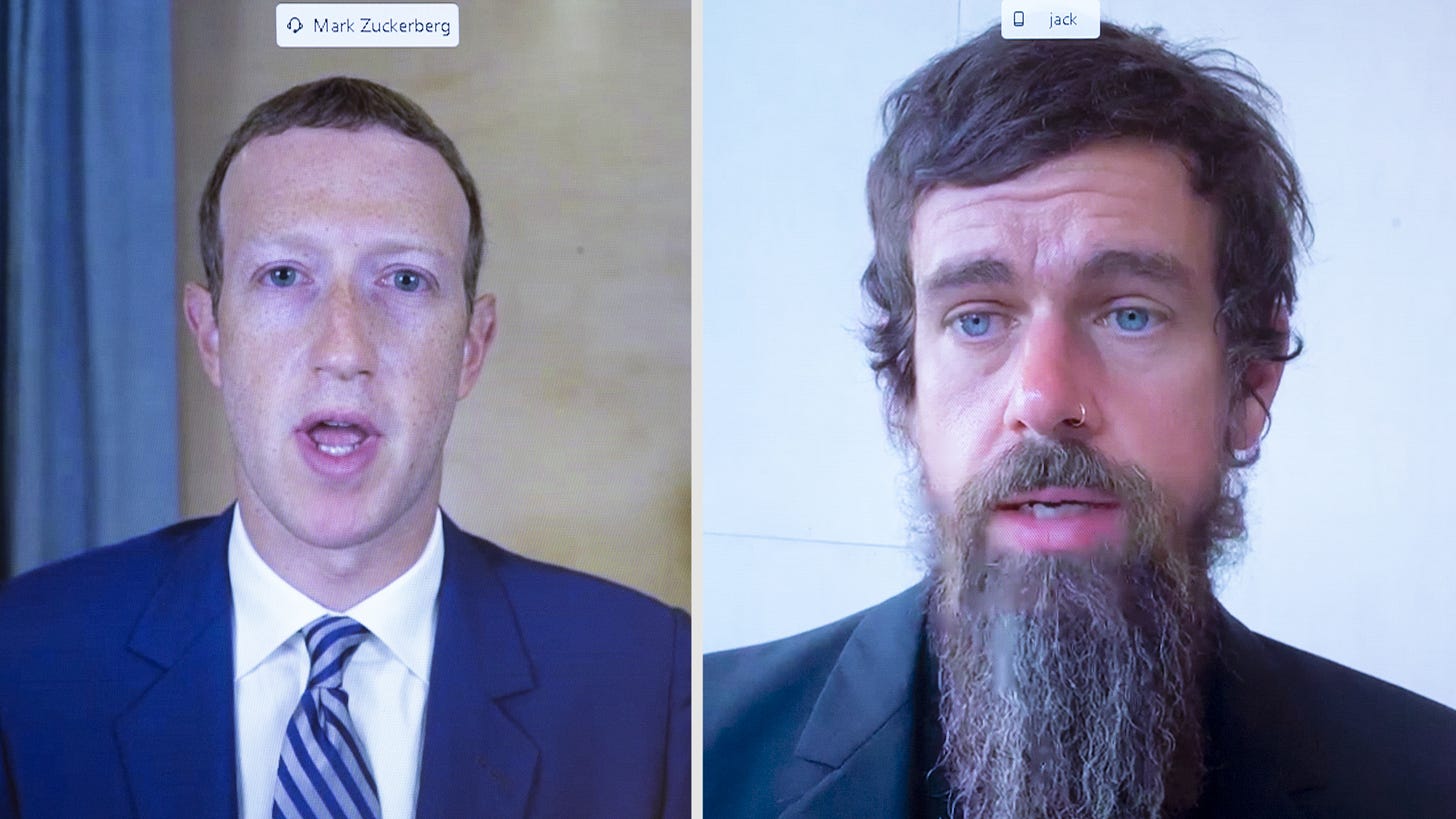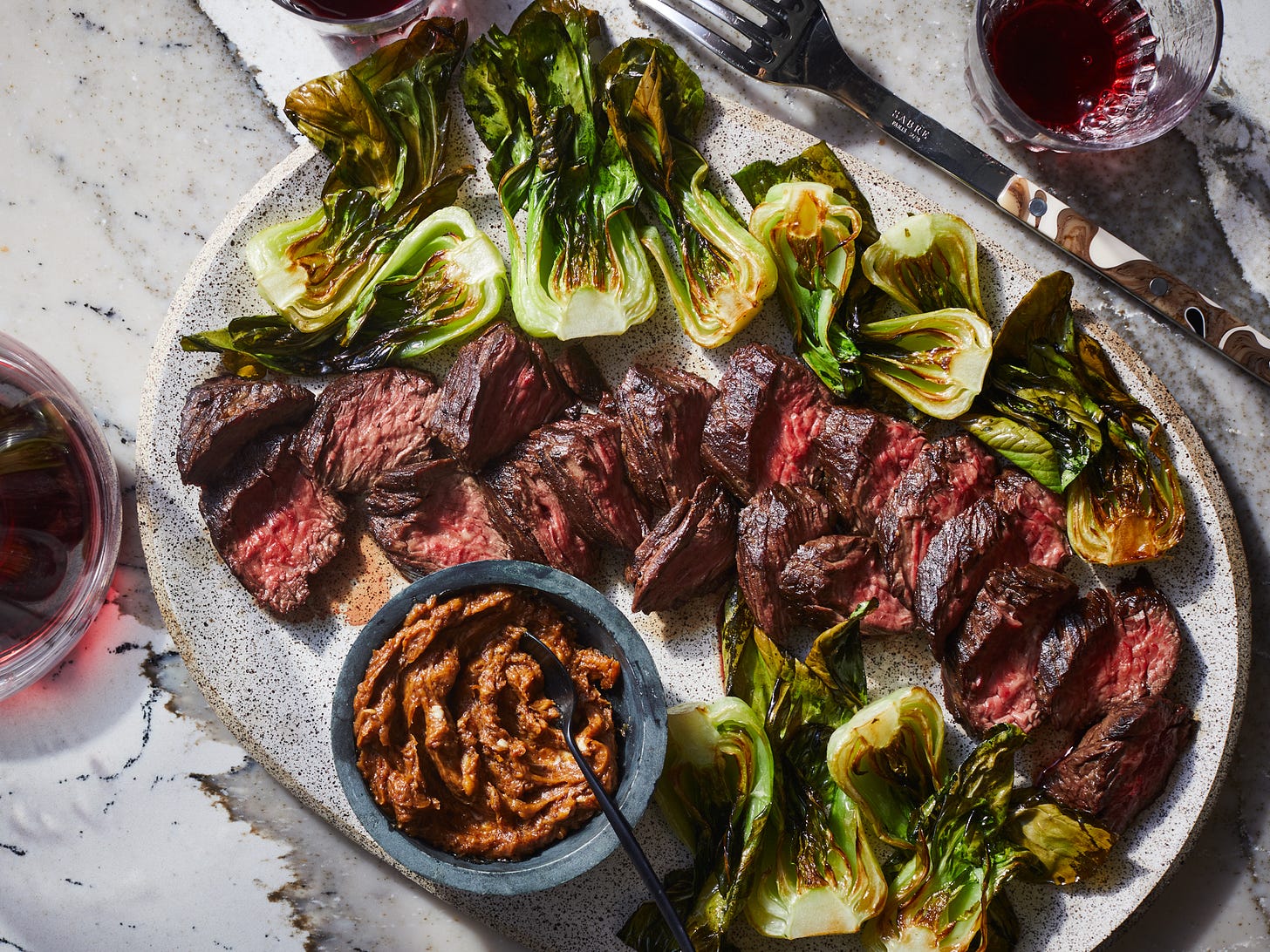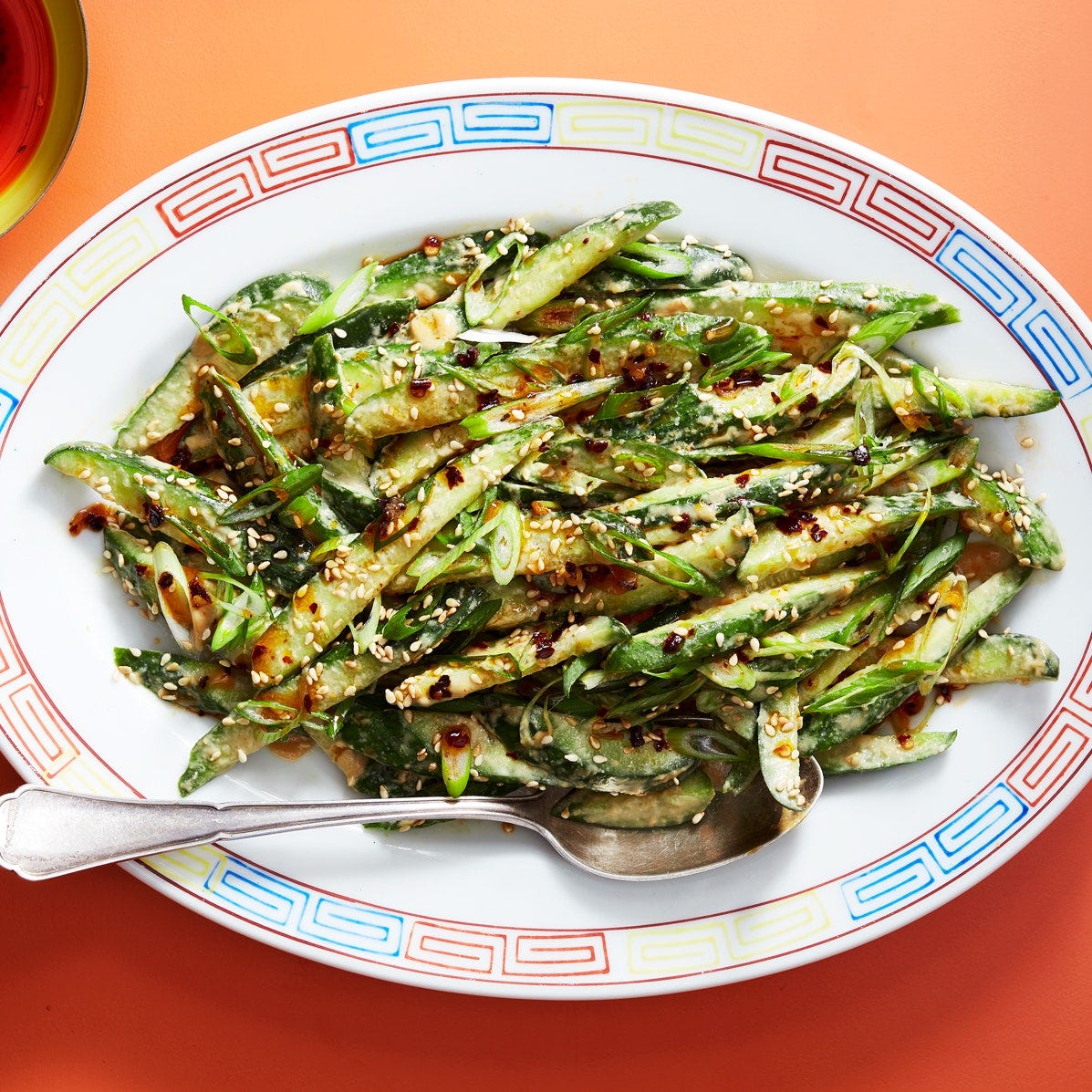Micah's Read of the Week, Vol. 42
Myspace Tom, Tesla & Apple, the end of the pandemic, how COVID improved our health care system, recipe corner, and more.
Hello, and welcome to Micah’s Read of the Week.
This is a newsletter filled with things Micah Wiener finds interesting.
Check out the introduction post here and the entire archive of previous newsletters here.
Please, subscribe and share with a friend.
Myspace Tom got it right
I never got into Myspace. But I loved this piece about its founder who cashed out, logged off, and let other execs face the problems caused by our new social media reality. The writing in this piece is outstanding. I’ve excerpted the best parts below.
Anderson sold Myspace to News Corp in 2005 for $580 million. Six years later, Myspace sold again for a hugely depreciated $35 million. Industry analysts have long regarded the downfall of Myspace to be one of the greatest missed opportunities of the last decade, but frankly, I think it’s becoming increasingly clear that Anderson got off easy. It is true that Twitter and Facebook are more influential, and possess wealthier executives, than anything in Myspace Tom’s estate. If you are an entrepreneur in the psycho Silicon Valley tradition — that is to say, you are capable of perceiving a functional, quality-of-life difference between net worths of $100 million and $100 billion — then perhaps you too envy the lives of Jack Dorsey and Mark Zuckerberg.
Go take a look at Anderson’s Instagram page. There are no bar charts, or product promos, or lengthy pontifications on how NFTs will “disrupt the investment economy.” Instead, Anderson uploads a steady stream of beautiful photos from all over the world. He’s gazing at a sunbeam in Antelope Canyon, before skipping off to Hawaii.
Compare that to the architects of Twitter, or Facebook, or literally any other social media enterprise with clout in the 2020s. The rent has come due. It’s now brutally apparent that the necrotic, parasocial tics encouraged by those platforms have an immeasurably negative impact on society. Twitter remains one of the worst places on the internet, to the point that it might be giving its most chronic users lifelong anxiety disorders. If you are a social media executive in 2021, a significant portion of your job must now be spent proving that your website isn’t actively destroying people’s lives.
Myspace, on the other hand, peaked in 2005 — a time when the internet was both young enough and small enough to not cause any lasting damage to humanity.
I think this image from Dorsey and Zuckerberg’s most recent testimony to Congress sums up the divide. Dorsey is almost a year into cultivating his Rasputin beard, Zuckerberg dressed like G-Man from Half-Life, and each of them are locked in an interminable Zoom call where they’re frequently lectured by pedants like Ted Cruz about the tyranny of Section 230. This is what happens when you’ve let social media grow beyond your grasp. Dorsey and Zuckerberg exist in a prison of their own making, and neither of them will ever be able to take the Myspace way out.
Where do you think Anderson was during that hearing? Probably knocking back his third mai tai, on an island so exclusive that neither you nor I have ever heard of it.
I think I’d rather be Tom. And speaking of technology leaders…
Tesla is like an ‘iPhone on wheels.’ And consumers are locked into its ecosystem.
Tesla is bringing the strategies pioneered by Apple to the auto industry. Consumers are learning that’s not always a good thing.
We’ve written quite a lot about Elon Musk in this space. Teslas have long appealed to me as desirable vehicles. This is an interesting story about some of the negatives facing Tesla owners. And they may sound familiar to anyone who’s ever owned an iPhone.
From the time they hit the mass market nearly a decade ago, Tesla’s vehicles have garnered reputations as “iPhones on wheels,” a revolutionary technological leap that did for cars what Apple’s smartphone did for consumer tech. They offered large touch screens, a vast charging network and groundbreaking performance that delivered on the dream of electrification seemingly without compromise, where competing products failed to stitch all aspects of that formula into one.
But consumers can pay a price for being locked into Tesla’s universe, like Apple customers in the computer giant’s ecosystem. They are at the mercy of Tesla’s way of doing things, from car repairs to software updates.
Tesla is different than other car makers. That much has long been apparent. However, the company isn’t necessarily revolutionary in every way. In some aspects, Tesla is clearly following Apple’s blueprint. And they are doing it with a lot of Apple’s own talent.
“There is a strong Tesla-to-Apple pipeline that is well-known within both companies,” said a recruiter.
“Tesla is not an automotive company, it’s a tech company that builds cars,” said one former employee of both companies who worked in products.
Buyer beware, Tesla is in control.
Months after buying a used Tesla Model S for nearly $46,000, Harpreet Singh began to notice the car wouldn’t travel far enough on a single charge to cover his work trips frequently stretching more than 200 miles.
Tesla had taken about 40 miles of range off his used Model S, which began with 265 miles, in what Tesla said was an effort to protect the battery. The update also slowed down charging times, Singh said. Tesla ultimately agreed to replace what it later concluded was a faulty battery, but at the expense of what Singh has found is slower acceleration.
Singh said he thinks about it like other tech updates. “I’m so comfortable with Windows 8. … Why do I have to change to Windows 10? And then everything breaks,” said Singh, 33, of Cypress, Tex. “Same thing here. … They can do anything to do it.”
In the end, Tesla follows the lead of its free-wheeling boss.
Some of the employees who made the leap between Tesla and Apple said they found Tesla to be sloppier on execution. Tesla put still-developing products, from Autopilot software to its newest cars, in the hands of consumers without the steady hand and design direction preventing the software bugs and quality control flaws.
“It’s like its superpower and Achilles’ heel at the same time: It doesn’t do things by the rule book,” said a former senior employee.
Podcast Promotion of the Week
Click below to listen to yesterday’s Back Door Cover. David Ruff joined me to discuss UFC 262, the looming NBA playoffs, and more. Subscribe here and get new episodes when we dive into the playoffs.
Is it now reasonable to discuss the end of the pandemic? Yes, but with caveats.
Let’s start with the good news:
New coronavirus infections in the United States have dropped to their lowest rate since mid-September and, if trends continue, will within days be lower than they have been in nearly 11 months. The numbers are good across the coronavirus data dashboard. More than half of adults have had at least one shot of vaccine, and the shots are remarkably effective at preventing severe illness and death.
But of course, there’s bad news too:
Still, pandemics start quickly and end slowly. And there is a huge caveat: Infectious-disease experts have repeatedly made clear that the coronavirus, known officially asSARS-CoV-2, is unlikely to be eradicated.
The only disease-causing virus in humans driven to extinction is smallpox. Others have been eliminated in geographical areas but lurk somewhere on the planet and can be reintroduced. Some measures to combat the novel coronavirus — including booster shots and perhaps mask-wearing and social distancing during winter, when respiratory viruses spread more easily — could remain part of our lives.
But…
The pandemic as we know it — a massively disruptive, lethal and terrifying health emergency that for months and months has been killing at rates comparable to cancer — could soon begin a gradual fade into memory.
“There’s not going to be a day we won. There’s not going to be Pandemic End Day,” said Justin Lessler, an epidemiologist at the Johns Hopkins Bloomberg School of Public Health and co-author of the recent CDC report suggesting high vaccination rates could drive infections to low levels this summer.“It’s going to be a gradual process. There’s going to be new variants.”
“It does look like, for the most part, vaccination is winning,” he said.
Of course, it’s still too soon to spike the football.
The U.S. population is not fully safe from the coronavirus (or any other virus) until the whole planet is safe. The global picture is alarming. Less than 25 percent of the global population has been infected so far, according to Maria Van Kerkhove, an epidemiologist with the World Health Organization. The coronavirus has plenty of fuel still available, and new introductions of the virus into the United States are possible for a long time to come.
Optimism is great, isn’t it? Hopefully, we’ve learned something from this experience...
A surprising pandemic side effect: It has improved health care
Shantanu Nundy is a primary-care physician. He’s also the author of this lovely piece about medical advances in the age of COVID-19.
Much of our focus over the past year has rightly been on the widespread failures related to the pandemic. But we’ve taken for granted just how flexible the American health-care system showed it can be in a crisis. Before the coronavirus, doctors, patients and policymakers had largely grown cynical about the prospect of bringing real changes to the front lines of care. But over the last year, we finally learned that the right role for innovation and technology should simply be to increase the care in health care.
Before the last year, most patients relied on their medical providers to navigate the byzantine health-care system. Now, many have had to find their own coronavirus tests and, more recently, their own vaccines — a frustrating experience, to be sure, but one that proved patients are their own best advocates.
The biggest change from before the pandemic is clearly the widespread embrace of telemedicine.
With the shift to virtual, home-based and community care, doctors finally began fulfilling the promise of “meeting patients where they are.” According to many observers, the coronavirus accelerated the shift toward virtual care by seven to 10 years. Nationally, we saw 46 percent of consumers use telehealth in the first months of 2020, up from a mere 11 percent in 2019.
Beyond technology, we realized that drive-through testing for acute viral illnesses is safe and efficient.
It turns out it’s just as easy, if not easier, to vaccinate large numbers of people at football stadiums or churches as it is in clinics or hospitals. Faced with overflowing hospitals, doctors also expanded the idea of hospitalizing patients at home — providing around-the-clock nursing support, a hospital bed and equipment, and IV medications — which is safer, cheaper and more humane for many patients who need hospital-level attention.
Recipe Corner
Sheet Pan Hanger Steak and Bok Choy with Lemon-Miso Butter
The Summer of Skirt Steak rolls on.
1/2 cup unsalted butter, softened
2 tablespoons red miso paste
1 1/2 tablespoons grated lemon zest
5 tablespoons extra-virgin olive oil, divided
2 tablespoons rice vinegar
1 small clove garlic, grated on a microplane
1 teaspoon kosher salt, divided
1 (1-pound) hanger steak, membrane removed
4 medium baby bok choy, halved lengthwise, rinsed, and thoroughly patted dry
1/4 teaspoon freshly ground black pepper
Stir together butter, miso paste, and lemon zest in a medium bowl until combined. Let stand at room temperature at least 20 minutes. (Mixture can be made ahead and stored in an airtight container up to 2 weeks.)
Whisk together 3 tablespoons olive oil, vinegar, garlic, and 1/2 teaspoon salt in a small baking dish. Add steak, and turn to coat. Cover and refrigerate 1 to 4 hours, flipping steak once or twice to ensure even coverage.
Light grill. Remove steak from marinade; discard marinade. Rub with 1 tablespoon lemon-miso butter. Grill steaks. Place steak on a cutting board. Dollop steak with 2 tablespoons lemon-miso butter. Let meat rest 10 minutes, then thinly slice the meat against the grain, and transfer to a serving platter.
Place bok choy in a large bowl, drizzle with remaining 2 tablespoons olive oil, and season with pepper and remaining 1/2 teaspoon salt; toss to coat. Arrange bok choy in a single layer, cut sides down. Grill until stems are crisp-tender and leaves are browned and crisp at edges, 9 to 10 minutes. Transfer bok choy to platter with steak. Serve remaining lemon-miso butter on the side.
Smashed Cucumber Salad
It’s cucumber salad szn, fam. There’s nothing better than a cold cucumber salad with anything, especially grilled meat. This one looks quite good.
6 medium Persian cucumbers (about 1 lb.)
1 tsp. Diamond Crystal or ½ tsp. Morton kosher salt
1 garlic clove, finely grated
¼ cup tahini
3 Tbsp. fresh lime juice
1 Tbsp. soy sauce
1 Tbsp. unseasoned rice vinegar
1 Tbsp. white miso
1 tsp. finely grated ginger
1 tsp. sugar
1 tsp. toasted sesame oil
Chili oil (for serving)
2 scallions, thinly sliced on a diagonal
1 tsp. toasted sesame seeds
Cut cucumbers in half lengthwise, then slice ¼" thick on a deep diagonal into 2"–3"-long pieces. Transfer cucumbers to a large bowl, add salt, and toss to combine. Cover and chill at least 1 hour and up to 12 hours. Drain cucumbers.
Whisk garlic, tahini, lime juice, soy sauce, vinegar, miso, ginger, sugar, and sesame oil in a small bowl to combine. Pour dressing over cucumbers and toss well to coat.
Transfer cucumber salad to a platter. Drizzle with chili oil and top with scallions and sesame seeds.
Where else can I find Micah content?
Podcasts: Mind of Micah, Back Door Cover, Too Much Dip
Twitter: @micahwiener & @producermicah (Why two twitters? It’s a long story)
Instagram: @micahwiener
LinkedIn: @micahwiener
Peloton: #badboysofpelly@micahwiener
Dispo: @micahwiener
Clubhouse: @micahwiener
Email: micahwiener@me.com








